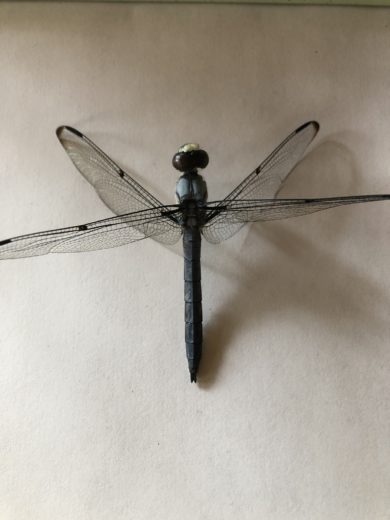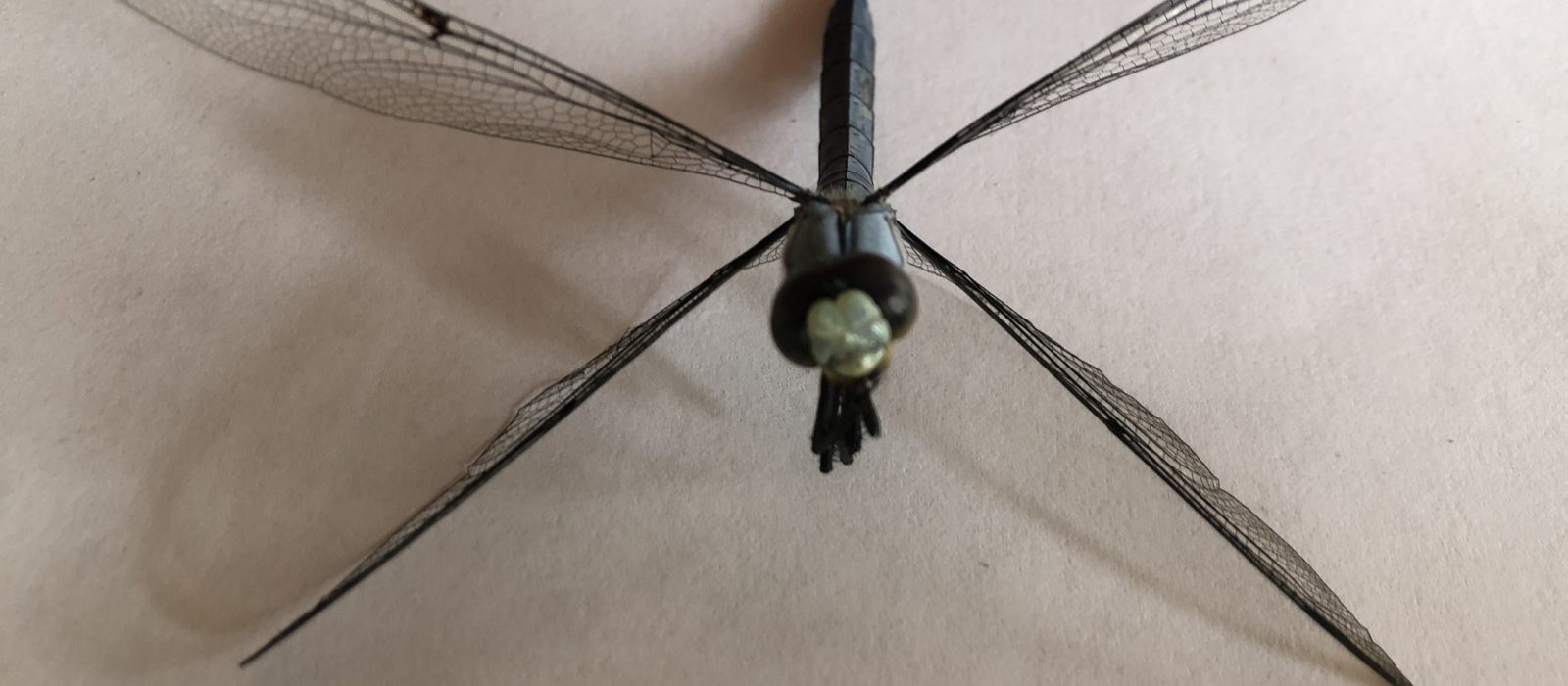It is, I like to say, the nature of rare things to be rare. You can’t count on seeing any particular rarity on any particular day, simply because… well, it’s rare!
But the Vineyard is famous for its biodiversity, and a lot of rare species either live here or visit here with some degree of regularity. Because we have so many rarities here, it’s perfectly possible to run into one of them on any particular day.
A great illustration of this principle just came for iNaturalist user claraan, who joined iNaturalist on August 14th and then, on the same day, nicely documented one of the rarest dragonflies known from the Vineyard: a great blue skimmer, Libellula vibrans. You can view claraann’s observation here.

Our checklist of Vineyard Odonates considers this large dragonfly to be an occasional visitor and cites occurrences in 2004 and 2005. Personally, I’ve only seen this species once on the Vineyard, observing one but not managing photographs at the Turkeyland boat landing in Edgartown in 2005, and I can only think of one or two other convincing sight records. As far as I know, then, claraann’s observation is the first documented record of great blue skimmer for Martha’s Vineyard. That’s a significant find!
A male great blue skimmers is a large Odonate with a powdery blue body, a white face, and black nodes and tips on its wings. Libellula vibrans is a southern species occurring regularly north to about New Jersey. But the species is well known for wandering northward during summer, and anecdotally, it appears that climate change may be extending the normal range of this dragonfly northward into our region. So it will likely become easier to find on the Vineyard over the coming years and decades.
While it’s a fairly distinctive insect, great blue skimmer can be confused with slaty skimmer (Libellula incesta). Male great blues can also be confused with male eastern pond hawks (Erythemis simplicicollis). So an observation of great blue skimmer substantiated by good photographs is useful proof of the occurrence of this species on the Vineyard.
Now is the season when the species is most likely here, so perhaps we’ll see some additional records. In the meantime, keep in mind the point illustrated by claraann’s well-documented find: even if you’re a new iNaturalist user or a new naturalist, there’s the possibility of making a significant discovery every time you take to the field.
Matt Pelikan is the director of the Martha’s Vineyard Atlas of Life project at BiodiversityWorks.
